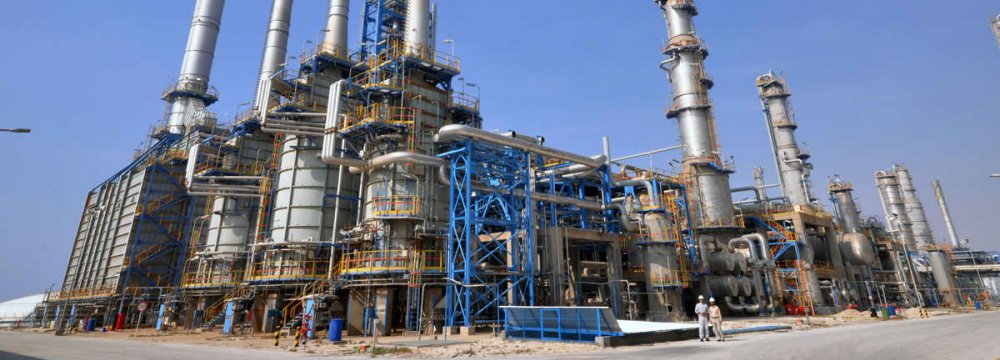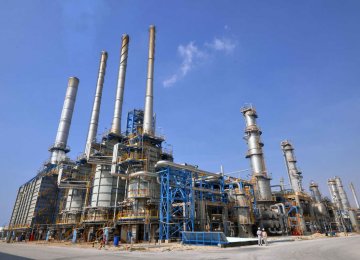Iran’s petrochemical output reached nearly 40 million tons in nine months, the National Petrochemical Company said in a report.
According to NIPNA, the country’s 57 petrochemical complexes produced over 39.9 million tons between March 21 and Dec. 21.
Nominal output capacity stands at 62 million tons of petrochemicals per year, while actual production is expected to reach about 60 million tons by March 2018.
Most Iranian petrochemical infrastructures are in southern regions close to the Persian Gulf where water supply is less of a concern and proximity to international waters makes transport and shipment more cost-effective.
Some 21 petrochemical complexes, centered in the city of Mahshahr in the southern Khuzestan Province, have had a combined output of more than 14.7 million tons in the nine-month period.
Plans are made to produce about 21 million tons of petrochemicals in the zone by the end of the current fiscal. Nominal production capacity of petrochemical plants in Mahshahr amounts to 25.6 million tons.
Production from 16 complexes in Pars Special Economic Energy Zone in Asalouyeh hit 16.8 million tons in the period. The nominal capacity of Asalouyeh complexes is estimated at 32.7 million tons per year, with actual production expected to surpass 26 million tons.
Other petrochemical complexes produced a total of 8.3 million tons in nine months. The report added that the complexes’ output is predicted to reach 11.4 million tons by March.
Total monthly production (Nov. 22-Dec. 21) stood at 4.3 million tons.
Domestic sales of the petrochemical industry in March-December reached 12.9 million tons worth $6.1 billion.
Tehran earned $9.55 billion in revenues from petrochemical exports last year, official data show. Petrochemical consignments went mostly to Asia, Europe and South America.
Iran holds some of the world's largest crude oil and natural gas reserves, but its petrochemical industry is comparatively underdeveloped.
Tehran says its new petrochemical ventures require over $70 billion in investments that should mostly come from foreign sources.
Rasoul Afsharzadeh, an official at the Persian Gulf Petrochemical Industries Company, said earlier this month that 10 petrochemical projects worth about $9 billion are being developed by the company, which have made 10-90% physical progress.
NPC aims to expand Iran's petrochemical production map under a plan covering new investment areas from West Azarbaijan Province to central and southern regions across the Persian Gulf coast.
The new ventures are chiefly aimed at producing propylene and olefins from methanol, a liquid chemical derived from natural gas.
Petrochemical is Iran's most important industry after oil and gas. NPC hopes to lift nominal output capacity to more than 120 million tons per annum by 2022, the last year of Iran's Sixth Five-Year Economic Development Plan.











Add new comment
Read our comment policy before posting your viewpoints